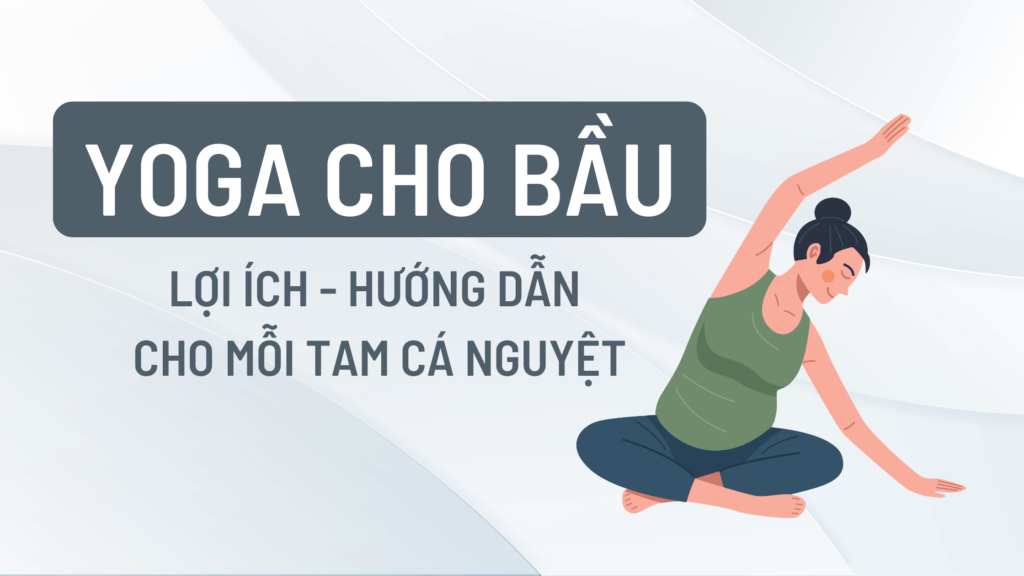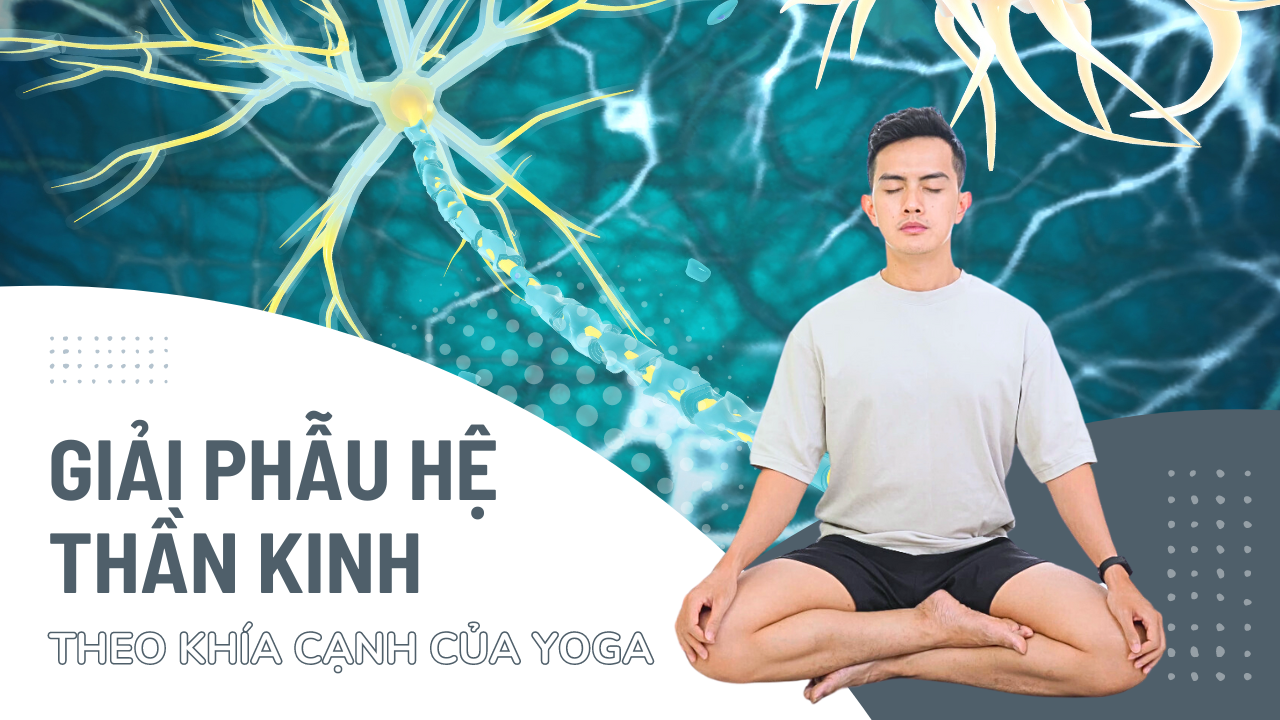Prenatal Yoga is gradually known as a safe and useful form of exercise for the development of the fetus and the health of the pregnant woman. In this article, we will learn about the benefits of practicing Yoga during pregnancy and the notes when practicing in each trimester for mothers to be healthy and safe during pregnancy. mine.
What is Prenatal Yoga?
Prenatal Yoga is a type of yoga that focuses on poses specifically designed for the body of pregnant women.
During pregnancy, certain hormones cause your tendons to loosen, increasing the likelihood of joint and bone problems, so Yoga for pregnant women will focus on stretching and strengthening movements. It helps prepare the body for labor and improves the mother's mental well-being.
Benefits of Yoga for pregnant women
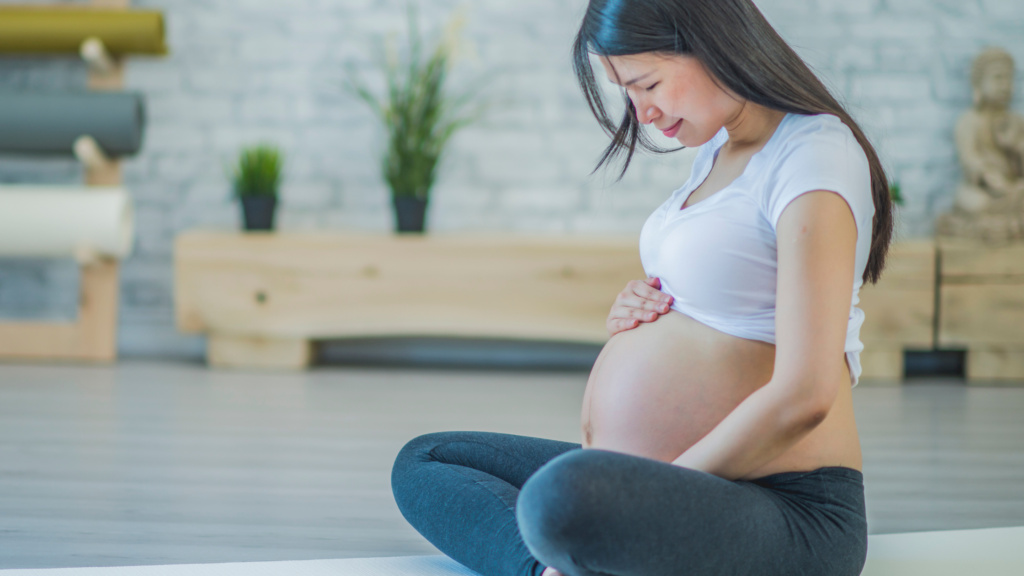
- Hypotension: A pregnant woman's heart rate and blood pressure will drop after doing Prenatal Yoga - even more effectively than after doing other low-impact exercises like walking.
- Reduce the risk of early miscarriage and other complications: High stress levels have been shown to increase miscarriage and preterm birth rates, and yoga is one method Great stress reliever, and improve sleep. Women who practice yoga - which includes breathing exercises, correct postures and meditation - for an hour a day have been shown to have a lower rate of premature birth.
- Control your weight: Like any other physical activity, Yoga keeps you active, helping you better manage your pregnancy weight gain.
- Improved birth experience: Stretches can improve your birthing experience and recovery, as your abdominal muscles and other vital organs are stronger and more balanced.
In fact, one small study found that women who participated in a six-session antenatal yoga regimen spent less time in labor than those who didn't. They also said they felt less pain and more comfort during labor and immediately after.
Notes when taking a yoga class for pregnant women
- Always consult a specialist before starting yoga. Even if you and your baby don't have any particular concerns.
- More notably, your body produces a hormone called relaxin throughout your pregnancy that helps make room for your baby's growth and preparation for birth.
The presence of relaxin may make you feel more flexible than usual, but be careful not to over-stretch; There is also the potential to destabilize joints and ligaments during this time.
- The biggest danger for pregnant yoga practitioners is falling. Therefore, limit that risk, especially when your belly starts to swell, by being careful when performing balancing poses.
For added stability, consider using Yoga bricks. Avoid any pranayama (breathing exercises) that can make you feel dizzy to reduce your risk of fainting.
What will yoga class for pregnant women include?
Breathing exercises
You will be instructed to focus on deep breathing to help reduce or manage shortness of breath during pregnancy.
Gentle stretching movements
You will be able to gently move different areas of the body such as neck and arms, shoulders, legs, etc.
Asana postures
While standing, sitting or lying on the ground, you will gently follow a series of different poses to develop strength, flexibility and balance. Accessories such as blankets, pillows and straps may be recommended by the instructor to provide more support and comfort and safety.
Relax and let loose
At the end of each Pregnancy Yoga session, you will relax your muscles and restore your resting heart rate and breathing rate. You may be encouraged to listen to your own breathing, paying close attention to feelings, thoughts, and emotions.
What should be done in each trimester?
First trimester
- Focus on easy and gentle poses to help your body adapt to the change.

- Avoid lying flat on your stomach or twisting your body like Marichyasana II and III or Ardha Matsyendrasana.

- Focus on comfortable, gentle poses, like baby pose (Child's pose), goddess pose (Goddess), head-to-knee yoga pose (Head-To-Knee Forward Bend)…
Second trimester
- During the second trimester, your body begins to produce higher levels of the Relaxin Hormone. Relaxin relaxes the tendons, muscles, and aorta in preparation for labor, be careful not to over-stretch, or cause injury.
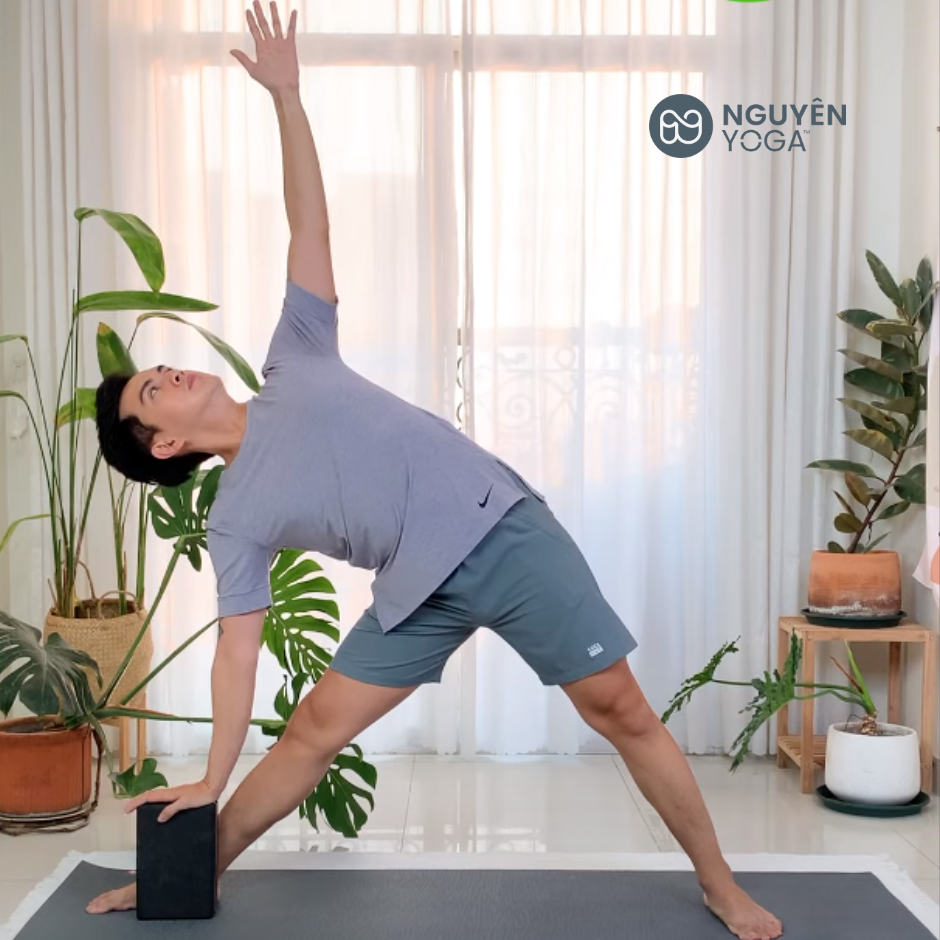
- You can do some movements such as: Bound angle pose, Triangle yoga pose, Standing forward bend, etc.
Third trimester

- Since your fetus is taking up more space, you may have trouble breathing and moving. Relax, move gently, and rest as much as you want.
- You can perform lying on your back or lying on your right side, hand balance positions such as: Warrior 2 (Warrior II), Garland pose, Side corpse pose, Meditation…
5 yoga poses for pregnant women
There are many yoga poses that are comfortable and safe to do during pregnancy. Here are the poses that you may encounter in your Yoga for Pregnancy class:
Cat Pose - Chakravakrasana (Cat Pose)
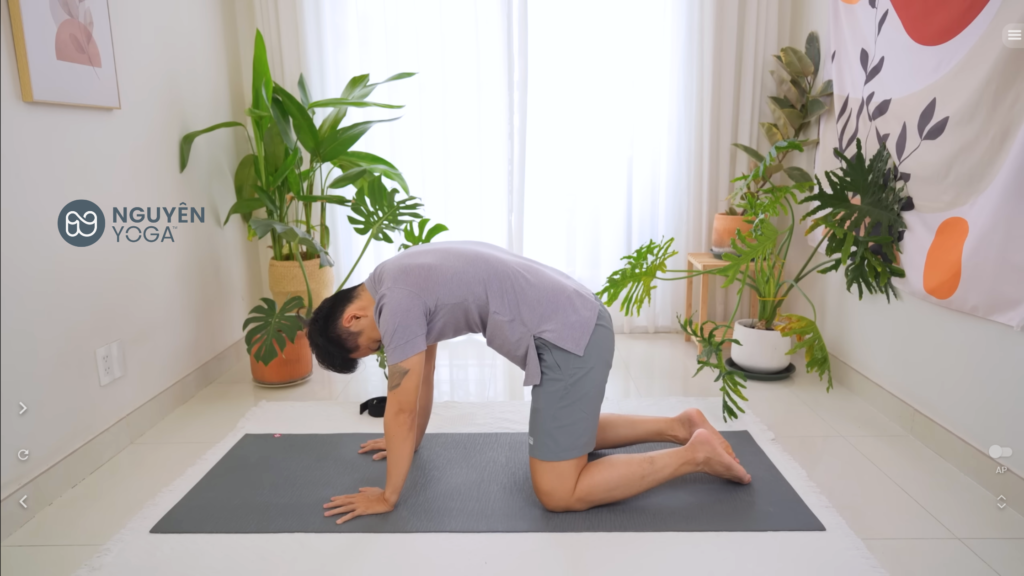
Jute is a gentle way to wake up the spine and help put your baby in the best position for birth.
Gate Pose - Parighasana
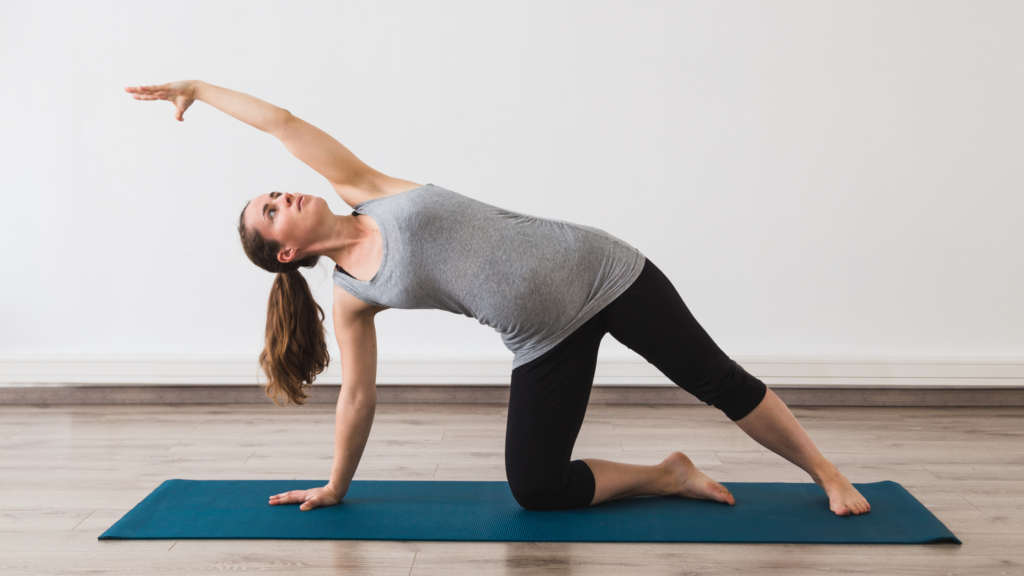
An arm outstretched pose helps you create a little more space in a tight stomach.
Warrior Pose II (Virabhadrasana II)

A standing pose strengthens the legs and widens the hips.
Fixed Angle Yoga Pose (Cobbler Pose – Baddha Konasana)

This gentle pose helps to stretch and open the hip bone in the inner thigh; If needed, use cushions under each knee for support.
Yoga poses on the wall – (Viparita Karani)
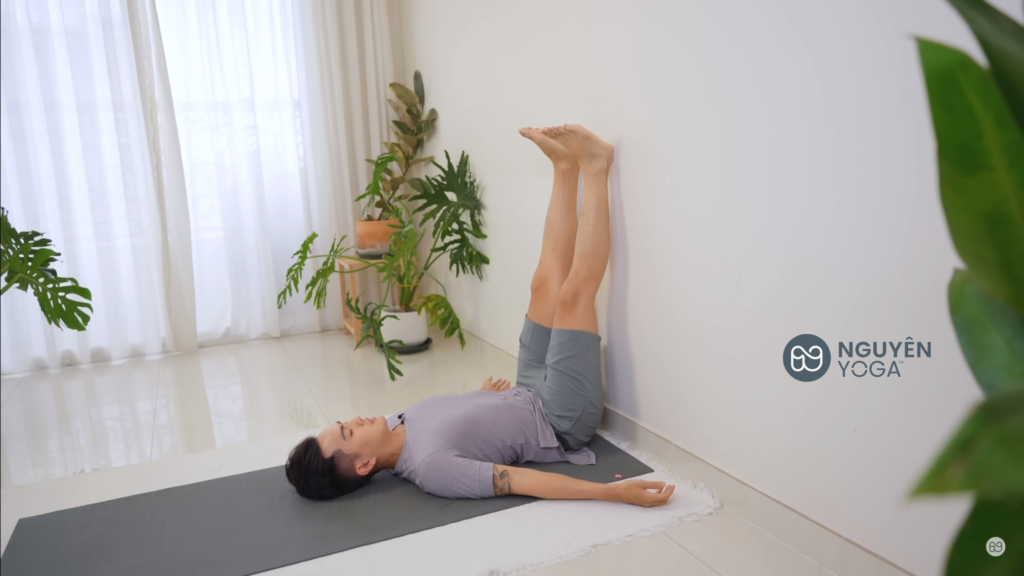
This is a very effective way to reduce swelling in the legs and feet.
Nguyen hopes that the above sharing will be effective and useful for your pregnancy. Besides, there are also many articles on health and yoga therapy at Nguyen's blog, especially Youtube channel Nguyen has many other useful exercises and movements, please follow and look forward to Nguyen!
References
Safe Prenatal Yoga Tips for Each Trimester
Prenatal Yoga Poses for Every Trimester

